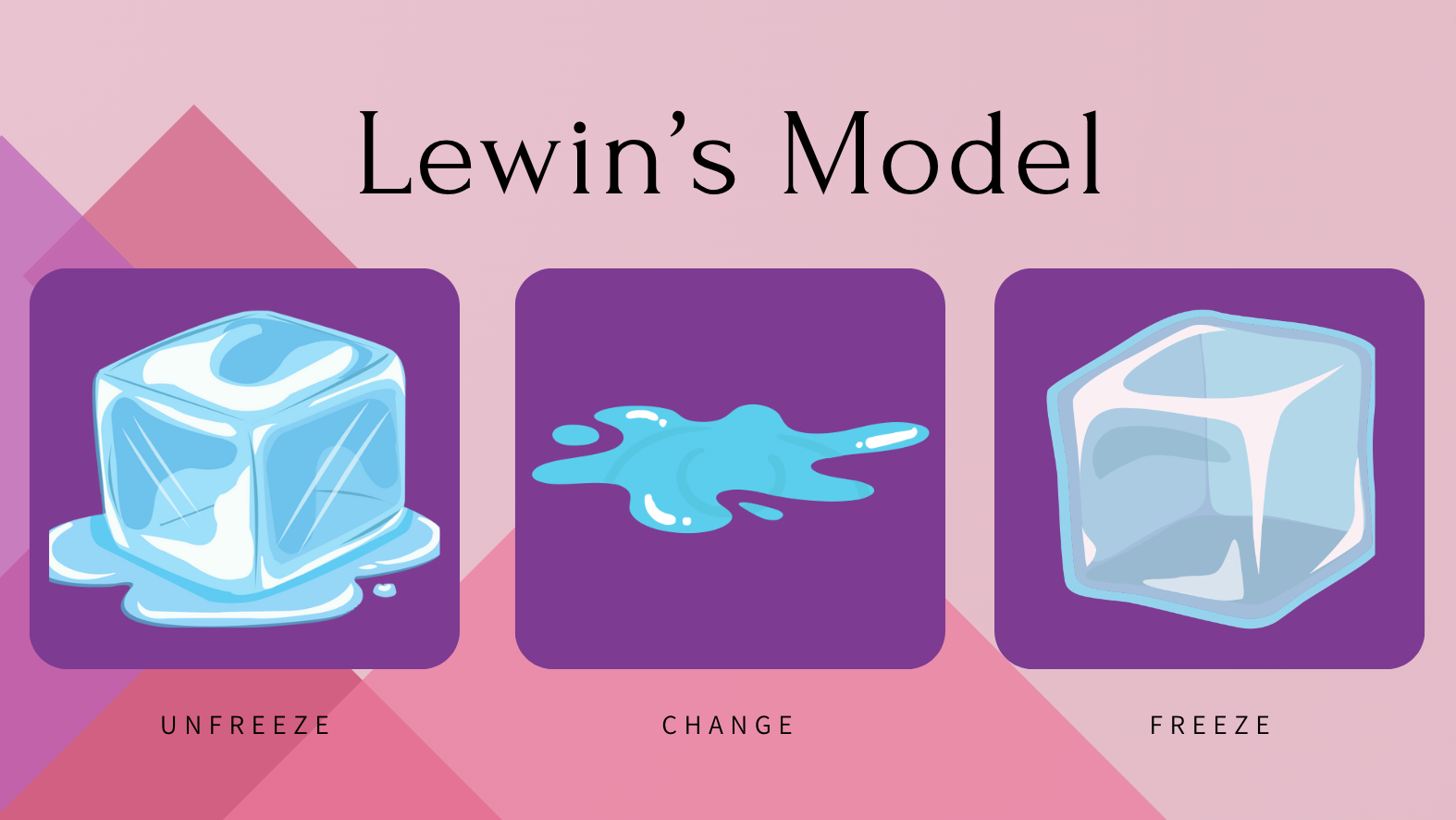Which is the Best Change Model to Use for Nursing? Everything You Need to Know

Navigating Change with Confidence: Your Ultimate Guide to Best Change Management Practices in Nursing!
In the intricate tapestry of healthcare, where compassion meets cutting-edge science, change is not just an occasional visitor; it’s the heartbeat of progress. As nursing professionals, you are the architects of transformation, navigating the delicate balance between tradition and innovation, all while ensuring the best possible care for your patients.
This guide explores the significance of change management practices in nursing, emphasizing the challenges of leaving old habits behind and adopting new behaviors, processes, or workflows. It highlights the importance of nursing change theory models, such as the Lippitt Change Theory and Lewin’s model, in anticipating and overcoming barriers to change in healthcare organizations.
Nursing isn’t just a profession; it’s a calling, a commitment to continual improvement.
Get ready to embrace change with wisdom, insight, and a newfound sense of empowerment. The journey awaits, and this guide is your passport to transformative success.
Eager to unveil what lies ahead? We’ve prepared a concise overview just for you. Brace yourself to delve into the world of top-notch Change Management for Nursing, and feel confident knowing we’re here to accompany you every step of the way on this expedition.
Quick Summary
Change Management in Nursing: The Whys and How’s of Change Models
Nurses use change models to strategically navigate the disruptive nature of change and change management in nursing leadership. Without such models, organizational transitions may not occur as intended. The significance of nursing change theory models lies in their ability to guide planning, strategies, and address individual behaviors and barriers crucial for successful leadership and change management in healthcare.
Models like Lewin’s change model and the Lippitt change theory ensure that change is executed strategically and thoughtfully. Barriers to implementing change in nursing, including individual resistance, poor communication, budget constraints, lack of organized processes, and technology issues, are effectively addressed with the aid of these change models.
Innovative Frameworks: Understanding Change Models in Nursing
Change models in nursing involve selecting a theory or methodology to understand and manage the complex process of organizational transition. Common concepts across various change management models include recognizing the necessity for individuals to “unfreeze” from old behaviors, providing support during the change, and building a supportive team of leaders and change champions. Strategies for successful change management in nursing encompass detailed planning, assessing organizational readiness, impact assessments, communication plans, addressing resistance, stakeholder management, staff training, and goal assessment. Sustaining changes in healthcare processes is crucial, and models like Lewin’s emphasize the freezing of new behaviors to establish a new norm.
Change strategies often adopt a bottom-up approach, focusing on individual change before organizational change, as forcing top-down changes may lead to alienation and resistance. Models like Lewin’s, ADKAR, or the Bridges transition model are employed to ensure a people-centric and nurturing approach to change management in nursing.

Strategic Change Management: Utilizing Lippitt’s Theory in Nursing
Lippitt’s Theory of Change in nursing is a popular model that focuses on the change manager’s perspective, offering seven phases as a roadmap for implementing changes in healthcare processes:
- Diagnose the Problem:
- Articulate the reason for change to ensure a shared understanding of the problem and the necessity for change.
- Assess the Motivation and Capacity for Change:
- Identify barriers to change, such as personnel or technology, and assess the motivation and readiness of leadership and stakeholders.
- Assess the Resources and Motivation of the Change Agent:
- Evaluate the commitment, power, and stamina of change agents (champions) recruited to drive change in their respective departments.
- Choose Progressive Change Objects (Action Plans & Strategy Development):
- Develop action plans, including training and communication strategies, to facilitate change management in nursing.
- Ensure the Roles and Responsibilities of Change Agents are Clear and Understood:
- Communicate with change agents to define and clarify their roles, such as motivator, facilitator, and subject matter expert.
- Maintain the Change Through Communication, Feedback, and Group Coordination:
- Provide ongoing support, communication, and feedback to ensure the sustainability of changes in healthcare processes.
- Gradually End the Change Support and Remove the Change Agents from the Relationship:
- Mindfully phase out support, dismantle the change agent network, and acknowledge their contributions once the change becomes ingrained in the organizational culture.
While Lippitt’s theory is less focused on the individual’s journey through change compared to Lewin’s model, it provides a comprehensive roadmap for change managers, aiding in strategic planning and implementation objectives in nursing change management.
Leading the Way: Strategies for Using Lewin’s Change Model in Nursing
Lewin’s Change Model in nursing is a widely utilized approach for guiding people through changes in healthcare processes, offering a three-stage methodology:
- Unfreeze:
- Address current habits and practices that need to change.
- Determine the need for change and assess readiness.
- Gather leadership support, develop strategies, and manage resistance and other barriers.
- Change:
- Execute plans and strategies, training people on the change.
- Manage resistance, rely on leadership support, and engage the change champions network.
- Communicate consistently, address misinformation, and involve employees in the change plan.
- Freeze:
- Sustain the change and reinforce new behaviors.
- Provide training and support, promote ways to sustain change, and celebrate success.
Lewin’s Force Field Analysis is an additional component, focusing on identifying and addressing forces that either drive change forward or restrain it, emphasizing the importance of managing barriers and fostering support.
The model’s simplicity, encapsulated in the stages of Unfreeze, Change, and Freeze, contributes to its widespread use in nursing change management. Although it may require more detailed planning compared to some other models, it provides a clear framework for change managers to incorporate their strategies in nursing.
Transformative Care: Unveiling the Importance of Change in Nursing
Change models in nursing play a crucial role in facilitating successful transitions for individuals and organizations. These models, rooted in change theories in nursing, provide valuable insights derived from study and analysis of change processes. They guide actions to address barriers to change in nursing and outline effective approaches for planning change management. In the dynamic landscape of healthcare, marked by constant changes in processes, procedures, medications, and regulations, the importance of ensuring successful transitions is paramount.
Change theories and associated models consider both organizational and personal perspectives throughout the change transition, offering strategies to sustain and reinforce change for long-term success in nursing practice.
Detailed Deep Dive
Managing change in the nursing sector involves juggling many balls at once, something that’s not at all unfamiliar to nurses. The best change management models for nursing (discussed below) are used to facilitate organizational change.
When applied correctly, they are a powerful step-by-step instruction guide for moving a nursing or healthcare organization from the “old method” to a future state “new method.”

Change Management in Nursing Practice
Exploring Changes in Healthcare & Change Theories in Nursing
There are many reasons why nurses are the perfect change managers for changes happening in healthcare facilities.
By the nature of their jobs, nurses are used to being flexible and changing to accommodate patients, doctors, and circumstances. They are also unique in that nurses are the “connective tissue” of hospitals and other healthcare facilities, which puts them at the center of most changes in health care organizations.
Implementing change in nursing practices and healthcare facilities requires an understanding of effective change management. Organizational change management is about facilitating any change in process, technology, procedures, job duties, or workflows.
See Also: Best Guide for Improving Healthcare Leadership in Healthcare & Social Care
Do you have questions about change management in nursing? or how to implement change in nursing? We’d love to hear from you, click here to contact us.
What This Guide Provides to You and Anyone Interested in the Best Change Management Practices for Nursing
Any change requires people to leave behind old habits and behaviors, learn new behaviors, and adopt the new process or workflow as their new “habit.” Barriers to change in nursing can make that process more difficult.
Nursing change theory models help change managers and others facilitating changes in health care organizations anticipate barriers and overcome them. Without one of the models of change management in nursing, successfully guiding and sustaining new behaviors can be much more difficult.
A few of the change theories in nursing we’ll be discussing below include the Lippitt Change Theory and Lewin’s model of change nursing, which are both popular in nursing.
We’ll look at questions like:
- What is change management in nursing?
- What is the Lippitt Change theory nursing uses?
- What is Kurt Lewin’s change theory in nursing?
- What are other change models in nursing?
- Why are change models important for leading change in nursing?
The change process in nursing can sometimes seem like a revolving door of constant transition. But no matter whether it’s physician change management or a change management process in nursing, each transition requires its own change strategy to be successful.
Change strategies in nursing have to account for the many different reasons changes in healthcare can happen. These include:
- New technologies
- Advances in science
- Changing patient behaviors
- Need to reduce costs
- Recent changes in healthcare regulations
- Workforce shortages
- New treatment or patient protocols
Why Do Nurses Use Change Models?
The disruptive nature of change and change management in nursing leadership requires a strategic approach to any organizational transition.
Without a model to help with managing change in nursing practice and healthcare organizations, change may not happen properly or in the way it was intended. Trying to navigate a transition without change models in nursing is like going on a voyage without a navigator. You’re likely to get lost.
Changes in health processes and procedures can have a direct impact on patient care, which is why nursing change theory models are so important to use.
They offer vital navigation of planning, strategies, individual behaviors, barriers, and more that are critical to successful leadership and change management in nursing.
Using Lewin’s change model in nursing, the Lippitt change theory or one of the other models of change management in nursing can help ensure change is done strategically, thoughtfully, and successfully.
Barriers to Implementing Change in Nursing
A big piece of the change management process in nursing, which is often highlighted in a change theory in nursing PowerPoint or other instructional change PPT, is addressing barriers to change.
Barriers to implementing change in the workplace nursing environment come from multiple directions. Using Lewin’s change model nursing or one of the other change models in nursing can help you anticipate and move past barriers to change in nursing.
Some of the common barriers to managing change in nursing are:
- Individual anxiety or resistance to change
- Leadership that tries to force change instead of nurturing staff through it
- Poor communication when implementing change in nursing
- Budget and resource constraints
- Lack of an organized change process in nursing
- Technology problems
- Skepticism that the change will work
- Lack of accountability for recent changes in healthcare processes
- Lack of staff skills for implementing change in nursing practice
Don’t Miss: The Best Practices for Changing Organizational Culture in Healthcare
Got questions like “What are nursing change theories?” or “What is change management nursing?” Drop us a message and let us know.
What are Change Models in Nursing?
Before we get into the individual models that help remove barriers to implementing change in nursing, we’ll discuss the change theories in nursing in general and what change models do.
What is change management in nursing using a change model?
It’s choosing a theory or methodology that’s designed to help you understand and manage the change process.
There are several methodologies about leading change in nursing that you can use. We’ll get into some of the differences between Lewin’s model of change in nursing and the Lippitt change theory in the next section, but first, we’ll go over commonalities in change management models.
What are the main concepts of change strategies in nursing?
Old Behaviors Have to Change
People have to be “unfrozen” from old behaviors in order to be ready to transition to new changes in healthcare processes. Both the Lippitt change theory nursing model and Lewin’s change management model in nursing note this as one of the first steps to change.
People get attached to a certain way of doing things, and understanding the emotions involved with managing change in nursing practice is critical to being able to get people on board with a change and with leaving old behaviors and habits behind.
People Have to Be Supported to Change
While teaching new behaviors and ways of doing things, leadership, and change management in nursing must give people their best chance for success. Employees learning a new process may experience:
- Anxiety that they won’t be proficient in the new process in time
- Worry that their job will be in jeopardy
- Confusion about what’s expected of them
- Anger that things have to change at all
- Ambivalence that the change won’t stick around
Implementing change in the workplace nursing studies show requires being nurturing of users and supportive of their needs and feelings. This allows you to better address concerns and get them on board with the change, so they’re excited about it rather than dreading it.

You Can’t Do It Alone
An important part of change management in nursing practice is to recruit and coach a team of leaders and change champions that can help you drive support for the change throughout the organization.
By using leadership coaching, you can help managers understand their part in nursing and physician change management. They’ll be a big part of evaluating how the staff is being impacted by the change and seeking out resistance to the change so it can be addressed.
Change management in the nursing leadership can lighten the load on the change management team by helping with staff surveys, communications, and identifying change champions in their departments.
Change champions (also known as change agents) are employees that are supportive of the change and willing to help drive changes in healthcare processes in their departments. Developing a change champions network is another valuable part of change theories in nursing.
Managing Change in Nursing Requires a Strategy
Detailed planning and development of a change strategy is another important part of implementing change in nursing. This involves multiple pieces that are used together as a change management roadmap and will include things like:
- Assessing organizational readiness
- Developing a change impact assessment
- Creating a change communication plan
- Managing resistance to change and barriers to change in nursing
- Identifying and managing stakeholders
- Developing a training plan for staff
- Assessing your project goals and milestones
The change process in nursing that you choose, aka the change model, will help you with this strategy for implementing change in nursing practice. But not all models are as detailed as others.
This means that some nursing change theory models will give you the entire roadmap, while others will give you more of a general overarching idea of what to do, but you’ll have to fill in a lot of blanks yourself.
Change Doesn’t Always “Stick”
What is change management in nursing if the change doesn’t stick? If you don’t include ways to sustain the recent changes in healthcare processes that your organization just went through, there’s a good chance that some people will revert back to the “old way” of doing things.
You’ll find that one of the answers to, “Why use Lewin’s change model in nursing?” is because it’s designed to address this particular issue. Lewin’s model of change in nursing talks about freezing the new behaviors from changes in health care procedures so they’ll become the new “way we do things.”
Most models of change management in nursing will address the need to sustain the change, meaning you’re not done when you hit your go-live date. Rather, for successfully leading change in nursing, you have to support employees for some time after the change has happened to reinforce the new behaviors.
Healthcare Organizations Can’t Change Unless People Change
You’ll find that many change strategies in nursing are designed to use a bottom-up strategy that focuses on the need for people to change individually before the organization as a whole can change.
If change management in nursing leadership tries to force a change from the top down, employees may feel alienated and never be truly on board with the change.
One of the biggest barriers to implementing change in nursing are user feelings about the change and resistance to making the change. This is why using Lewin’s change model in nursing, or a model like ADKAR or the Bridges transition model can ensure that people stay in focus and are properly nurtured.
Related: Resolving Barriers to Change in Healthcare & Physicians
Are you looking examples of implementing change in nursing practice? or change management in nursing examples? Send us a message with your questions or comments.
What are the Change Models in Nursing?
Now that you have an overview of how models help with physician change management and managing change in nursing practice, let’s discuss the models themselves.
We’ll give a brief overview of major change theories in nursing. This will help you understand how the models used for leadership and change management in nursing can differ.
Once we give you an overview of these change models in nursing, we’ll go deeper into two of the most popular in nursing, which are Lewin’s model of change in nursing and the Lippitt change theory nursing model.
It’s important to note that these models used for implementing change in the workplace nursing practices are also used in multiple other industries. Those models dealing more with the human side of change tend to be the ones most used and most featured in change theory in nursing PowerPoint presentations and articles.
Because of the personal nature of healthcare and the nurturing nature of the nursing profession, the change management process in nursing has to also be nurturing and supportive to fit the culture.
You’ll find these nursing change theory models all keep that support in mind, they each just do it a little differently.
The Bridges Transition Model
This is the most nurturing of all the change management in nursing practice models because it’s totally focused on the emotional journey that individuals take as they go through change.
The Bridges Transition model differentiates between change itself as an external process that happens to people and the internal transition that they go through. The model’s three stages of transition are: Endings, Neutral Zone, and New Beginnings.
As models for changes in healthcare go, this one is very nurturing and supportive of individuals but does not give a lot of planning and strategy direction for those managing change in nursing.
Kurt Lewin Change Model
Lewin’s change model in nursing is one used widely in the healthcare field. It’s a model that is also focused on the behavior of people going through a change process in nursing.
Kurt Lewin’s change theory in nursing is based on the simple concept of there being three main stages to change: Unfreeze, Change, Freeze.

Kurt Lewin’s Change Model
Using Lewin’s change model in nursing also involves understanding resisting and driving forces for changes in healthcare and managing barriers to change using Lewin’s Force Field Analysis.
Why use Lewin’s change model in nursing? We’ll go deeper into this model shortly.
Lippitt’s Phases of Change Theory
Another popular model for driving changes in healthcare is the Lippitt change theory. This model is particularly helpful to those leading change management in nursing because it focuses on the change managers and what they need to do.
The Lippitt change theory nursing model lists seven phases for implementing change in nursing. They begin with diagnosing the problem, include assessing resources and motivation, and end with the gradual removal of change agents as change successfully embeds itself in the organization’s culture.
We’ll go much more into detail about the Lippitt change theory in the next section.
The Prosci ADKAR Model
One of the most robust change theories in nursing, healthcare, and other industries is the Prosci ADKAR Model. It addresses both the need to nurture and support individuals and provides a detailed roadmap for change agents to follow.
This is one of the change theories in nursing that might take a little longer to learn, but it “checks all the boxes” and won’t leave those managing change in nursing having to fill in a bunch of the planning and strategy blanks on their own.
The ADKAR model discusses five stages that those impacted by the change need to go through to ensure change management in nursing is implemented successfully. These are: Awareness, Desire, Knowledge, Ability, and Reinforcement.
Popular Article: Applying Best Change Management in Healthcare | All You Need to Know
Are you looking for change theory nursing examples? or ways on how to implement change in nursing practice? Send a message to our change management team.
How Do You Use Lippitt’s Theory of Change in Nursing?
The Lippitt change theory is one of the popular nursing change theory models because it looks at change from the change manager’s perspective. It provides seven different phases that act as a roadmap to follow for making changes in healthcare processes.
Here are the several different phases laid out for those leading change in the Lippitt change theory.
1. Diagnose the Problem.
When applying this stage to managing change in nursing, this can be articulating the reason for the change, so everyone understands what the problem is and why the change is necessary.
2. Assess the Motivation and Capacity for Change.
Does the organization have barriers to change in nursing practices such as personnel or technology? Are leadership and stakeholders motivated to change? One of the tools you can use with this phase is an organizational readiness assessment.
3. Assess the Resources and Motivation of the Change Agent. This includes Change Agent’s Commitment to Change, Power, and Stamina.
This phase relates to the change champions, also known as change agents that you recruit to help drive the change forward in their individual departments and teams. You can go through the evaluation process with change agents when putting together the change champions network.
4. Choose Progressive Change Objects (Action Plans & Strategy Development).
This is the phase in the Lippitt change theory where you’ll create your action plans to facilitate your change management in nursing. This will include many of the plans that we mentioned in the earlier section (training, communication, etc.).
5. Ensure the Roles and Responsibilities of Change Agents are Clear and Understood. Examples of Roles Include the Motivator, Facilitator, and Subject Matter Expert.
Communications with your change agents/champions are important, so they understand their role in implementing change in nursing and health care procedures. This phase of the Lippitt change theory also helps you define various change agent roles.
6. Maintain the Change Through Communication, Feedback, and Group Coordination.
Once you’ve implemented the changes in healthcare processes dictated by your change project, it’s important to provide continued support, communication, and invite user feedback so you can ensure the change sticks and is maintained.
7. Gradually End the Change Support and Remove the Change Agents from the Relationship. This Should Occur When the Change Becomes Part of the Organizational Culture.
You want to mindfully end the support that was needed for the change process in nursing procedures. This includes dismantling your change agents’ network and thanking them for all their support.
This should happen once you’ve confirmed the change is now part of the organizational culture and has become “the way we do things.”
The Lippitt change theory is not quite as focused on the journey of the individual going through the change as it is on the change manager and change agents. In this way, it differs from Lewin’s change management model nursing theory.
On the plus side, it does provide steps that can act as a roadmap to help those creating change strategies in nursing with some comprehensive planning objectives.
Do you have questions like “What are examples of implementing change in nursing practice?” or want to see change management in nursing examples? Send a message to our change management team to get more information.
How Do You Use Lewin’s Change Model in Nursing?
Now, let’s take a look at Lewin’s change management model in nursing. This one is also one of the popular change theories in nursing to use and offers a comprehensive methodology for guiding people through changes in healthcare processes.
Lewin’s model of change nursing involves a 3-stage change process that describes in a bird’s eye overview of what has to happen when implementing change in nursing practice.
The three stages of Kurt Lewin’s change theory in nursing are as follows.
Unfreeze
Unfreeze describes addressing current habits and ways of doing things that need to be changed. When you need to remold a block of ice into something else, you first have to unfreeze it and melt it into water that can then be reshaped.
During the unfreezing stage of Lewin’s model of change nursing, you’ll be addressing employee concerns about the change, explaining why the change is necessary, and getting people on board to help facilitate the change.
Some of the things you would do in this phase of Lewin’s model of change in nursing would be:
- Determine the need for change and readiness for change
- Gather leadership support
- Develop your change strategy and plans
- Manage employee resistance
- Manage other barriers to implementing change in nursing
Change
In the change stage of Lewin’s change management model nursing theory, you’ll be executing your plans and strategy to train people on the change and new ways of doing things.
This is when all the activity is happening, and you want to ensure your planning execution stays on track. You’ll continue to manage resistance and rely on your leadership for support as well as your change champions network.
Some of the actions you’ll want to ensure in this stage of Lewin’s change management model in nursing include:
- Communicate consistently
- Address misinformation or confusion
- Encourage and inform leadership
- Engage employees in your change plan

Change Theories in Nursing
Freeze
The Freeze stage of Lewin’s change management model in nursing addresses the need to sustain the change and reinforce the new behaviors. As with the other change theories in nursing, reinforcing changed behaviors is vital to keep the change from being lost, and users reverting back to old habits.
This stage of Lewin’s change model in nursing incorporates the supportive activities that you want to incorporate to make sure change sticks. These include:
- Offering training and support
- Promoting ways to sustain the change
- Celebrating success
There is one more part to Kurt Lewin’s change theory in nursing which is Lewin’s Force Field Analysis. This analysis focuses attention on the forces that can either drive change forward or restrain changes in healthcare processes through barriers.
The goal is to identify the barriers causing the restraining forces and address those. At the same time, you want to foster support and buy-in while managing change in nursing, which will give you more driving (positive) forces.
Why Use Lewin’s Change Model in Nursing?
One reason that Lewin’s is one of the change models in nursing that’s widely used is that it puts change management into an easy to understand concept – Unfreeze, Change, Freeze.
While it leaves more “fill in the blanks” than some of the other change theories in nursing, it gives change managers the main buckets under which they can incorporate their change strategies in nursing.
Change Process in Nursing? Why is it Important?
Without change models in nursing, it’s difficult to successfully transition individuals and organizations through a change.
Change theories in nursing offer insight into actions that need to be taken, based on study and analysis of change, to drive a transition successfully. This includes addressing barriers to change in nursing as well as how to approach planning for change management in nursing.
Because of all the changes in health care processes, procedures, medications, regulations, etc. and the importance of what healthcare facilities do, it’s vital to ensure any transitions happen successfully.
Change theories in nursing and the change models used to implement them, keep in mind each stage of the change transition from an organizational and personal perspective, and offer ways to ensure change is sustained and reinforced.
Conclusion: Best Change Management in Nursing | Change Models in Nursing
As you can see, there are several change theories in nursing that you can choose from for successfully implementing change in nursing and healthcare facilities.
Two of the most popular are the Lippitt change theory nursing model, which focuses on seven main actions a change manager needs to take to guide change, and Lewin’s change model in nursing, which gives more of an overview on three stages of change that people need to pass through to successfully transition.
There are also several other change models in nursing, such as ADKAR or Bridges’ Transition Model, that give you different tools to use for managing change in nursing.
It’s also helpful to seek out a change theory in nursing PowerPoint or general change training PPT to become familiar with key concepts about change management. This will help you with a solid background to fill in any needed blanks for the model you choose.
The most important thing we learn from change models in nursing is that people and the need to nurture them through the change is vital to the success of any changes in healthcare processes.
Read More: Top Healthcare Consulting Firms | Ranking & Reviews
Note: Content on OCM Solution's ocmsolution.com website is protected by copyright. Should you have any questions or comments regarding this OCM Solution page, please reach out to Ogbe Airiodion (Change Management Lead) or the OCM Solution Team today. OCM Solution was previously known as Airiodion Global Services (AGS).
Images: https://stock.adobe.com, https://unsplash.com/photos/WxRd7byFxs4






